Nåstrond
2016-10-05
by Niklas Göransson
Karl NE dreams of the skies but digs in the soil; a scholar of the past evaluates the present, how a black sun sets on the horizon and gold turns into lead.
This article can also be found in Bardo Archivology Vol. 2, a printed anthology with selected features from the online archive. Additional content includes VOMITOR, NOCTURNUS, XIBALBA ITZAES, Ryan Förster, ANGELCORPSE, THE RUINS OF BEVERAST, ASCENSION, MALOKARPATAN, Manhunter: The Story of the Swedish Occultist and Serial Killer Thurneman, WARDRUNA, FORGOTTEN WOODS, LIFVSLEDA, SEIGNEUR VOLAND, and WOLCENSMEN – all presented in ambitious aesthetics with plenty of custom artwork. More information here.
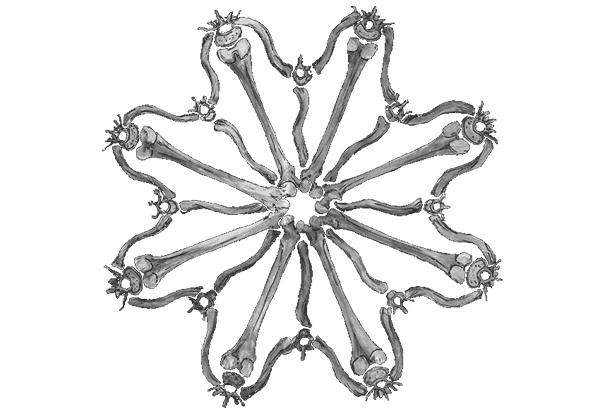
– This will be my last NÅSTROND interview, for our work is coming to an end. Everything is changing as we now find ourselves at the point where death has become the only way forward. The reasons leading up to this are several, but foremost is the distance that’s grown within the band as well as the need for liberation and progression. I’ve outgrown my teenage self, so there’s no further need to carry the past on my shoulders. This will also be my final commentary on the matter, for now we leave NÅSTROND to the void.
And so we turn from finale to beginning. “Toteslaut”, NÅSTROND’s 1995 debut album, was one of the most polarising albums I can recall; hated by most but hailed by many. It was completely different from everything else coming out of Sweden at the time. Instead of the usual shrieking vocals, the lyrics are orated in an agitated guttural rasp. There is also a strong atmospheric element which has a distinctly Hellenic feel.
–The Greek vibe was even stronger in our first band, TRIDENT, which is what eventually became NÅSTROND in 1993. I still enjoy some of the music I listened to back then, like the early ROTTING CHRIST albums and the NECROMANTIA demo tapes. Listen to “The Slaughterhouse” by BRIGHTER DEATH NOW and you’ll hear where the industrial sounds came from. Some influences weren’t even from music, the vocals being one such example; they were more inspired by horror movies. Nosferatu in particular set the tone for the album and to this day remains one of my favourite films.
I must ask, what the hell is going on with the drums?
– Suggesting what, exactly?
I suppose one could say they leave a bit to be desired in terms of power and organic feel.
– The percussion has always been the sole responsibility of Arganas, so it might be best to leave this question open. Let’s just say we had different ideas about where to take our sound, and this is one of the reasons why our collaboration is ending.
‘I don’t really care for the music, but the interviews are always interesting’ is a verdict about NÅSTROND I’ve come across a few times now.
– The concept of intent and meaning was always of greater importance than the actual musical output. This became clear to me at an early stage, when I realised I could use NÅSTROND to communicate certain ideas – even propaganda. Art has always explored matters of depth: ideas wanting to be brought forth, be it a love for violence or the allure of darkness.
Are you giving up music entirely?
– No, there is a continuation for me in the shape of what I call THE SILENT MISTERY. It’s a name with a multi-faceted meaning which captures the essence of where I’m going. Once more, the cyclic law of nature at work. This shall be a solitary working, one in which there will be no room for superficial imagery. I intend to build further on ideas I’ve only briefly touched upon with my previous work. I’m also moving away from everything related to metal; the ‘666’ is of the past. Blasphemy is a tool for children that I have no further need of. I’m bidding farewell to the teenager within and embracing the man of my self. Honestly, these days metal speaks to me more of limitations than the power I felt in the beginning. I’ve lost touch completely, to the extent where I’d prefer to just distance myself from this farce of reproduction and commerce. I’ve long since crossed the threshold where I feel any kinship to either the culture or the types it attracts. This is immediately evident to me as soon as I find myself in the midst of such people, grazing the festival pastures like branded cattle with their logos and patches… as if their personality is reduced to flaunting the name of someone else’s creation – as if that gives them individuality? It’s all fake to me.
And you hover aloft in subcultural nirvana, eyeing down at the rabble?
– Not at all, I am equally guilty of this. I too have produced a lot of nonsense. A young man can easily fall victim to such things, especially in this scene where there’s a strong need to uphold certain stereotypes. Most of all, it’s the lack of sincerity that bothers me. In reality, most of those who currently enjoy metal prominence have very little personal connection to the image they project. They eat at McDonald’s, get drunk at parties, and watch television series. They like to hang out and have a good time and are not overly concerned with putting much thought into life. In a bid to spice up their mundane existence, they wear inverted crosses and believe this makes them the opposer – an adversary. Like birds fanning their feathers in courtship, all show and little foundation. These aren’t real ‘individuals’; they want to be, but they were never truly tested and have yet to even become adults. Pain, boredom, or whatever other neurotic ailments they struggle with are numbed by drinking and smoking. Whilst all this might sound arrogant, I’m really not trying to put myself above anyone else. I am full of self-criticism, but this needed to be said. Really, I urge everyone to think about it: what isn’t fake in your life? Take a long and hard look at yourself. What we need is a rite of passage. A war, now that would be a real test! To kill a man in front of you.
In certain parts of the Amazon jungle, tribesmen attain manhood by undergoing what’s regarded as the most painful experience ever documented: wearing gloves full of bullet ants. The reason these little monsters were given this name is that, pain-wise, their bite is comparable to being shot. They’re also known as ’twenty-four-hour ants’, since the agony lasts unabated for a full day.
– Suffering drives evolution; if you push through the gruelling hours of intense pain with no help but your own fortitude, you won’t come back the same person who woke up that morning. The essence of a rite is to manifest, to change, and this is something lost to our society. We have no trials, no opportunity to test our mettle through solitary survival like the Spartans did. Instead, it seems we’re supposed to go through life without pain, setbacks, or any semblance of real strife. Ritual and ceremony are crucial in the daily routine because they bring a certain order within one’s world. All throughout history, ritual has often been about birth – becoming a man or a woman – and, finally, death. Another interesting application is as that of a weapon, like certain Mesoamerican cultures that sacrificed enemies as part of their warfare strategy.
During the 1487 re-consecration of the Tenochtitlan pyramid – a monument erected to the war god Huitzilopochtli, or ‘Hummingbird of the Left’, in nowadays Mexico City – the Aztecs sacrificed some 20,400 prisoners over the course of four days. For religious holidays such as these abbatorial revelries, the Aztec nobility would consume teonanácatl, or ‘flesh of the gods’: the divine mushroom. Montezuma, last emperor of the Aztecs, is said to have used the sacrosanct fungus to commune with Huitzilopochtli himself. Interestingly, psilocybin mushrooms, which is what teonanácatl is called in the West, are known to induce a sense of communication at sufficiently high dosages.
– Just imagine the frenzy of these blood ceremonies. I’m fascinated by many of these Aztec religious practices, such as their use of the pyramid as a connection to the gods or heavens. Comparably gruesome spectacles were held in the Roman Colosseum – it seems that the shedding of blood binds large communities together. There’s obviously a connection between the gods and the different plants used both for communication and a source of life. Maize was considered highly sacred, as shown by its many interesting connotations to both their mythology and practices of ritual sacrifice; they would strip the skin off a person, like that of a maize, followed by decapitation and dismemberment. The god Xolotl, master of transformation, would also take the shape of a maize plant. His was the name of death, for Xolotl was the one who led departed souls in their journey through the underworld.
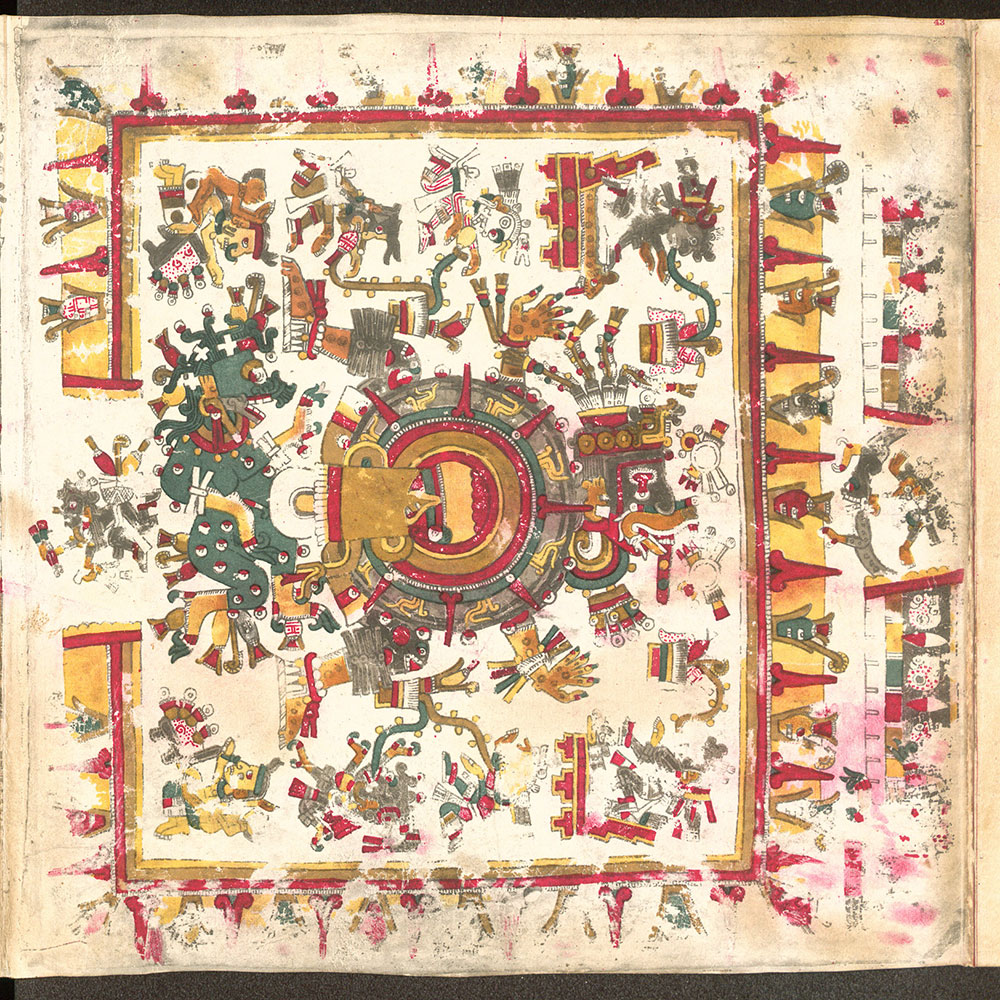
Incidentally, “Xolotl” is the name of the intro to “Toteslaut”. Xolotl is what’s known as a psychopomp, a mythological figure escorting deceased humans to the afterlife. The Grim Reaper is the most recognisable contemporary cultural icon, other examples are Mercury in the Roman pantheon, Anubis from Egypt, as well as Hermes, Hecate, and Charon of Ancient Greece.
– Charon is the ferryman of Hades, who brings the deceased over the river Styx to the land of the dead. He acts as mediator between the waking and unconscious realms, yet he passes no judgement in the process. It’s clear to me that the shore represents a symbolic land that must be left behind as one transcends, hence these heathen ship burials and funeral pyres on boats. The body has become redundant and is returned to the elements. These waters require no vessel, for the flesh is of the land – the shore. Fully disengaged from the corporeal anchor, whatever remains crosses the oceans into the unknown. Needless to say, this also ties in with the shore from the Nåstrond concept.
In old Norse society, those whose names echoed in shame among the halls of their people were believed to face an eternal afterlife stranded on Nåstrond – the shore of corpses. This endless skeleton-riddled beach was reserved for the most despicable characters society has to offer: the criminals, liars, traitors, and oath-breakers.
– There might be no ‘Hell’ to speak of, but being trapped in a limbo of nothingness would be a terrible punishment. These in-between states have been part of NÅSTROND’s concept since the very beginning, explored through themes such as vampirism and lycanthropy. The mysteries of transformation and immortality have been very important: the life eternal and transient passage, the tragedy of the undead. The bardo concept is precisely the intermediate space I’ve been talking about – the void between lives, between waking and sleep, or between the mundane and meditation. Nåstrond could therefore be interpreted as being confined within the bardo state, unable to proceed into your next life.
On the subject of Norse mythology, Karl notes that so-called ‘Asatru’ is currently enjoying somewhat of a bureaucratic renaissance in Sweden. The most prominent such group has recently been officially recognised as a religious congregation; apparently, obtaining theological approval from the secular state is seen as a paramount victory for heathendom.
– This modern form is garbled rubbish that’s lost itself in the details and disregarded the essence. I seek a purer form of archaic Indo-European religious belief, for this is the kernel of our being: a pagan outlook where all is connected within the mystical; where everything organic is part of the universal web of fate. I can see this sanctity within all life, even the living stone and its formation to deterioration – its transformation. It’s strange, but I can find both beauty and happiness within this wheel of birth and death.
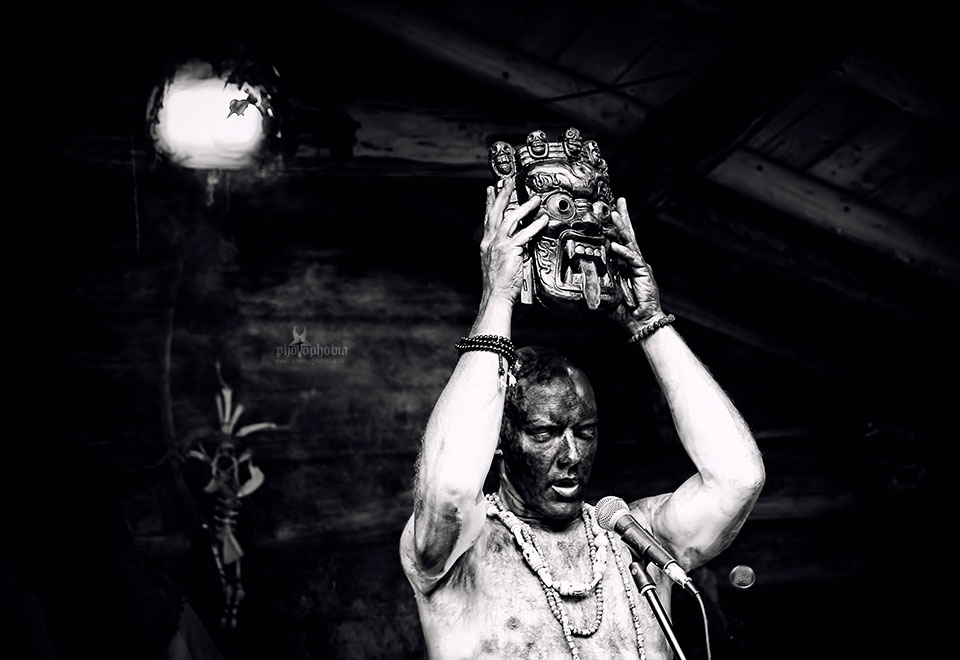
Life is obviously indisputable, but what do you think of sentience in nature?
– Certainly, but not in the manner we’re familiar with. This would be the essence of a pantheist perspective – one which, I might add, is supported by the study of ecology. Perhaps everything organic is joined in the same type of web that binds the trees together? We can see how they are all connected and can speak to each other.
Karl is referring to scientific discoveries showing forests to be entwined in a sort of hive mind, linked through a network of fungi connected to the roots. Different species of trees, previously assumed to compete for sunlight, have been proven to share resources. This chthonic web is used to transport nutrients between those with a surplus and ones with deficiencies, and when a tree is dying it will send any remaining carbon to its neighbours. Biologists were stunned to learn that the trees also use this subterranean grid to broadcast distress signals. For instance, if a bark-eating bug is discovered as having made its way into the forest, the trees in the vicinity will begin producing a foul-tasting chemical to keep it away. Furthermore, the fungus absorbs essential minerals from the soil and, quite extraordinary, even hunts and kills insects to harvest for nutrients which are then delivered to the trees via their roots. In return, the fungal network receives significant amounts of photosynthesised sugars, which it uses to grow its body. Whether or not the distribution is masterminded by the fungi or some manner of natural intelligence is still unknown, but it seems to be an established fact that the forest acts as one big organism.
– We might benefit from a similar synergistic relationship, rather than a purely exploitative one. Nature holds value on her own and does not exist for our sake, as the Abrahamic worldviews would have us believe. We are very much part of nature and should seek to protect her from harm. Somewhat related, I can’t help but wonder how all this ties in with ideas of ley-lines – meaning, patterns in the earth which connect places of what we could call numinous importance.
Ley-lines – a phenomenon found in a great variety of cultures, from the Australian Aboriginals to the Nazca valley in Peru – are geographical alignments that run over long stretches of landscape, binding together various prehistoric sites.
– Our forefathers clearly understood these connections, as well as their importance. This begs the question if their ceremonial structures were built on locations filled with energy? Natural nexions of the earth, so to speak; places which were already sacred before man proclaimed them so. The older I get, the stronger I feel the urge to deepen my connection with the wilderness. Modern life has come between me and my self – it has distorted what’s real and natural. I need to be out there to feel and experience it, even the harshness and the cold. This is to be alive, to be connected and aware. Studying the cycle of life and death is not only preparation for what lies ahead, it also anchors one to the present.
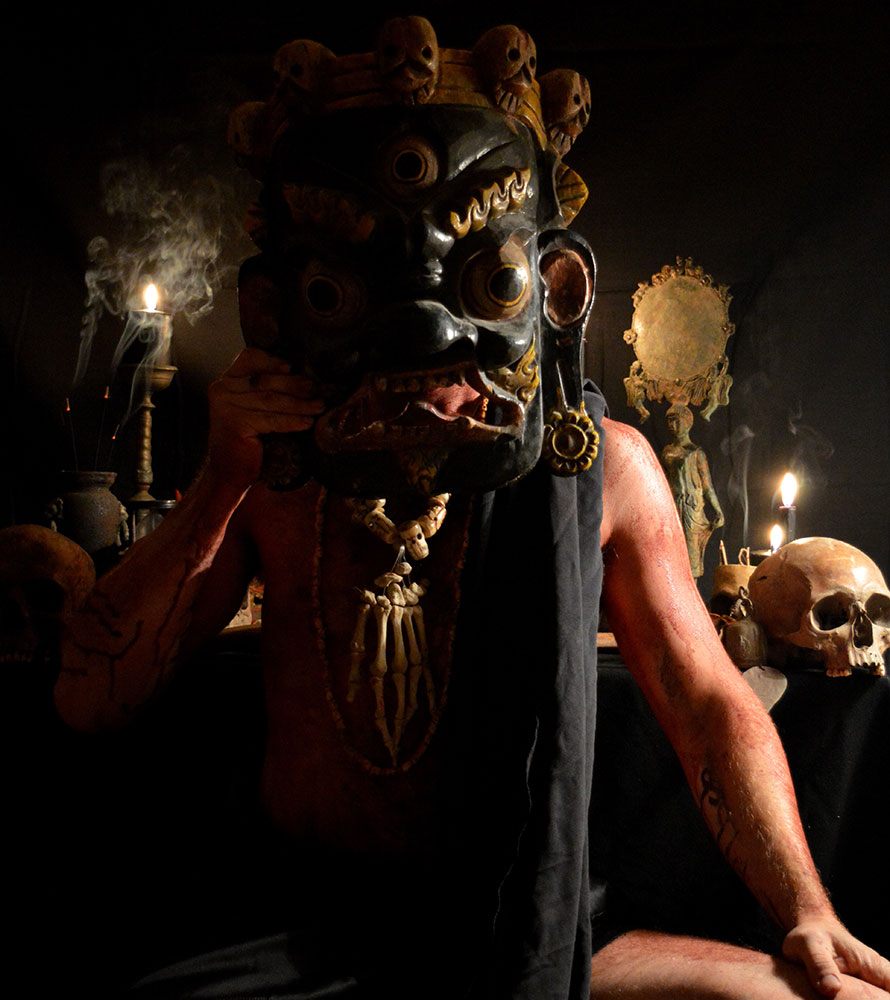
Karl says that humans evolve in accordance with their natural surroundings and interactions with the elements – laws of nature forming solid bonds between the hammer and anvil.
– A people shaped from toiling in a harsh and unforgiving climate will see their character moulded accordingly. The terrain that shaped, sheltered, and fed our forefathers became the framework for who we are. These lands show me where I belong in the world, and this is the ground in which my remains will be laid to rest when the current chapter of me is concluded. We could perhaps speak of a sort of nationalism unbound to any nation or state; one where the connection of Being lies in the soil itself. A people out of touch with the nature that formed them will become separate from their very being – rootless in more ways than one, so to speak. We’ve become disconnected where we were connected only a few generations back, and this has reshaped everything. After all, a culture is precisely that: the customs of a people reflecting their environment. The Norsemen didn’t exhibit their prowess through massive constructions, like the Romans did, but in their art, ships, and poems. That connection with nature is critical, and now we’re suddenly in a state of confused detachment. We’ve been blinded by the mirages of a world of clay and Hollywood sorcery, and this will crack open when the giant falls. We should strive towards the purification that will eventually lead us to the stars.
I’m assuming you’re speaking metaphorically here, but what do you think of space travel?
– I am actually being literal, in the sense that I believe us to be destined for venturing out into space and towards the stars. There are surely other worlds both within and outside us, and we should try to reach them. Leaving the earth would be a giant step, mentally – to attain the capacity to explore the universe. However, we have strayed from this as our culture is being destroyed from within. Gone is the Faustian hunger for crossing new boundaries; we have lost our brutality and pride.
While dreaming of worlds above, much of his waking time is dedicated to what’s buried below. Karl has a master’s degree in archaeology with expertise in Scandinavia and the Mediterranean. Thus far, he’s worked at excavation sites in Sweden, Italy, and Greece.
– My academic work in comparative religious studies has led me to the conclusion that we are moving away from a spiritually enlightened state towards one of smothered degeneration. This is in full accordance with the ideas of yugas, or ages: from times of gold into days of lesser metals. The erosion of today sets in motion a natural will of sorts – a development towards uniqueness and the refinement of a culture and its people. This is, in fact, a honing process. Nature wants us to separate in order for us to become whole again. She wants us to evolve further and return to her order; to become more distinct, to discriminate, and to advance ourselves.
You speak of the significance of death and rebirth for the individual, does the same apply to civilisation itself?
– I believe so. My stance is similar to that of Oswald Spengler, regarding the organic shape of civilisation and its need for rejuvenation. Rebirth is a weapon and a privilege obtained only by the destruction of the old; the death and the becoming. Die in order to live, simply put – another pagan concept echoed in science, which teaches that all carbon-based lifeforms are made from remnants of dead stars. One day the star that warms our earth will turn cold, and there is no life under a black sun. There are strange truths in the cyclical nature of organic life.
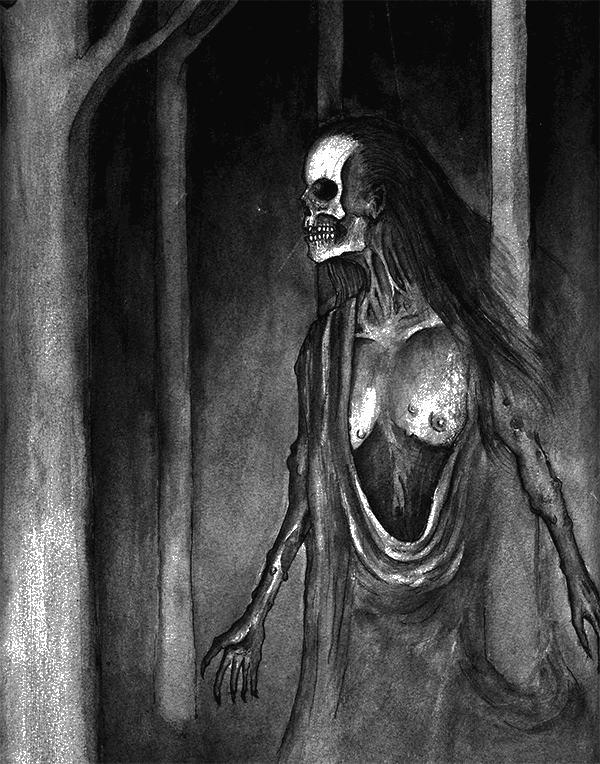
This article can also be found in Bardo Archivology Vol. 2, a printed anthology with selected features from the online archive. Additional content includes VOMITOR, NOCTURNUS, XIBALBA ITZAES, Ryan Förster, ANGELCORPSE, THE RUINS OF BEVERAST, ASCENSION, MALOKARPATAN, Manhunter: The Story of the Swedish Occultist and Serial Killer Thurneman, WARDRUNA, FORGOTTEN WOODS, LIFVSLEDA, SEIGNEUR VOLAND, and WOLCENSMEN – all presented in ambitious aesthetics with plenty of custom artwork. More information here.



